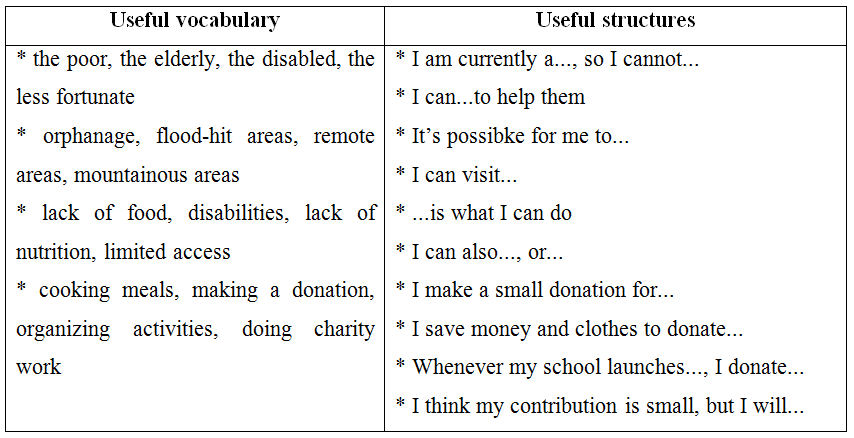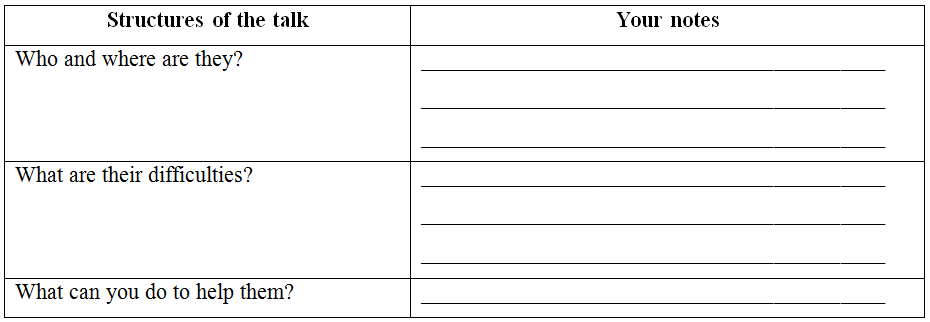5. According to the passage, how many people died from illnesses associated with exposure to Agent Orange?
 Giải bởi Vietjack
Giải bởi Vietjack
Đáp án: D. There is no exact number.
Dịch nghĩa câu hỏi: Theo đoạn văn, có bao nhiêu người chết vì bệnh liên quan đến phơi nhiễm chất độc da cam?
A. 3.181 người B. 4.5 triệu
C. 18 triệu D. Không có con số chính xác.
Giải thích: Thông tin ở câu 1 đoạn 4: “Unfortunately, there are not any firm figures for the number of adults who suffer from or have already died from illnesses associated with exposure to Agent Orange.”
Gói VIP thi online tại VietJack (chỉ 400k/1 năm học), luyện tập gần 1 triệu câu hỏi có đáp án chi tiết
4. It is_________to use words like ‘dumb’, ‘blind’ and ‘deaf’ to the disabled. (RESPECT)
Talk about what you think you can do to help people in need.
You can use the following questions as cues:
* Who and where are they?
* What are their difficulties?
* What can you do to help them?
Useful languages:

Complete the notes:

Now you try!
Give your answer using the following cues. You should speak for 1-2 minutes.
1. I am currently a..., so I cannot...
2. I can...to help them
3. I can visit...
4. I can also..., or...
5. I make a small donation for...
6. Whenever my school launches..., I donate...
7. I think my contribution is small, but I will...
Now you tick!
Did you ...
- answer all the questions in the task?
- give some details to each main point?
- speak slowly and fluently with only some hesitation?
- use vocabulary wide enough to talk about the topic?
- use various sentence structures (simple, compound, complex) accurately?
- pronounce correctly (vowels, consonants, stress, intonation)?
Let’s compare!
Finally, compare with the sample answer on page 190.
3. He_________blind. He became visually impaired after an accident.
4. He began to teach English for disabled children in 2002. (since)
→____________________________________________
1. She has used a wheelchair since her bones (fracture)__________in the car accident last year.
Write an essay (150-180 words) about problems that people living in remote and mountainous areas in your country may face.
* You can use the following questions as cues:
* Who are they?
* What are their problems?
* Why do they have those problems?
__________________________________________________________________
__________________________________________________________________
__________________________________________________________________
__________________________________________________________________
__________________________________________________________________
__________________________________________________________________
__________________________________________________________________
__________________________________________________________________3. This campaign has been launched since 1999. (for 20 years)
→____________________________________________
1. The charity raises a fund of thousands of dollars for the underprivileged so far.
8. He has been a volunteer for Youth Blood Donor Organisation_________.
1. People in my neighborhood have_________more than $400 to the charity.
1. The last time I saw her was 5 years ago. (for)
→____________________________________________
1. This non-profit organisation_________milk for hundreds of children in this remote area.